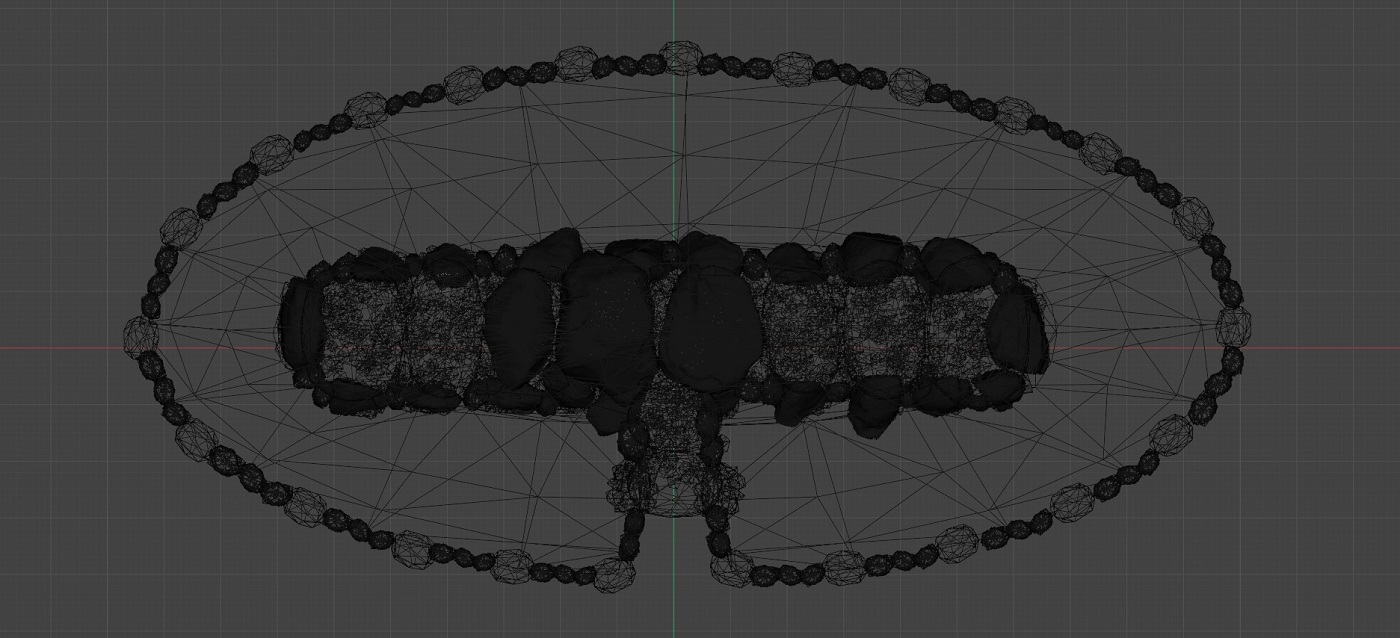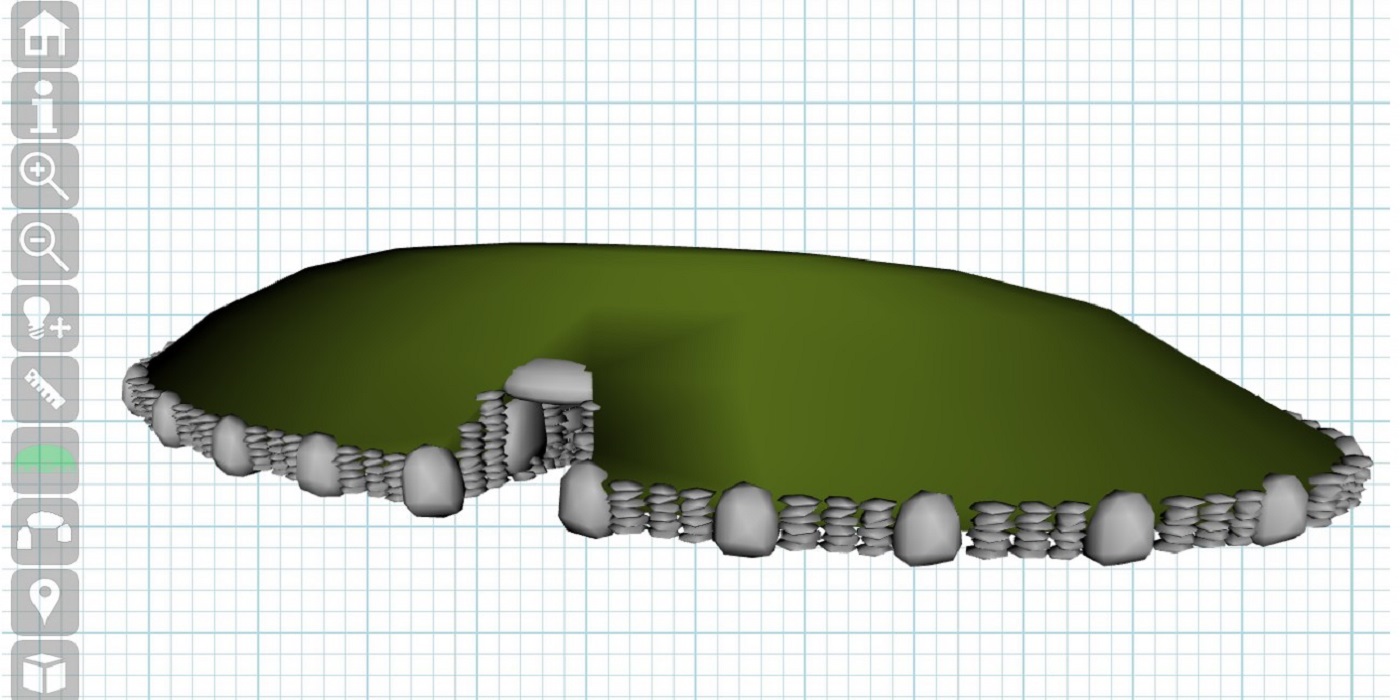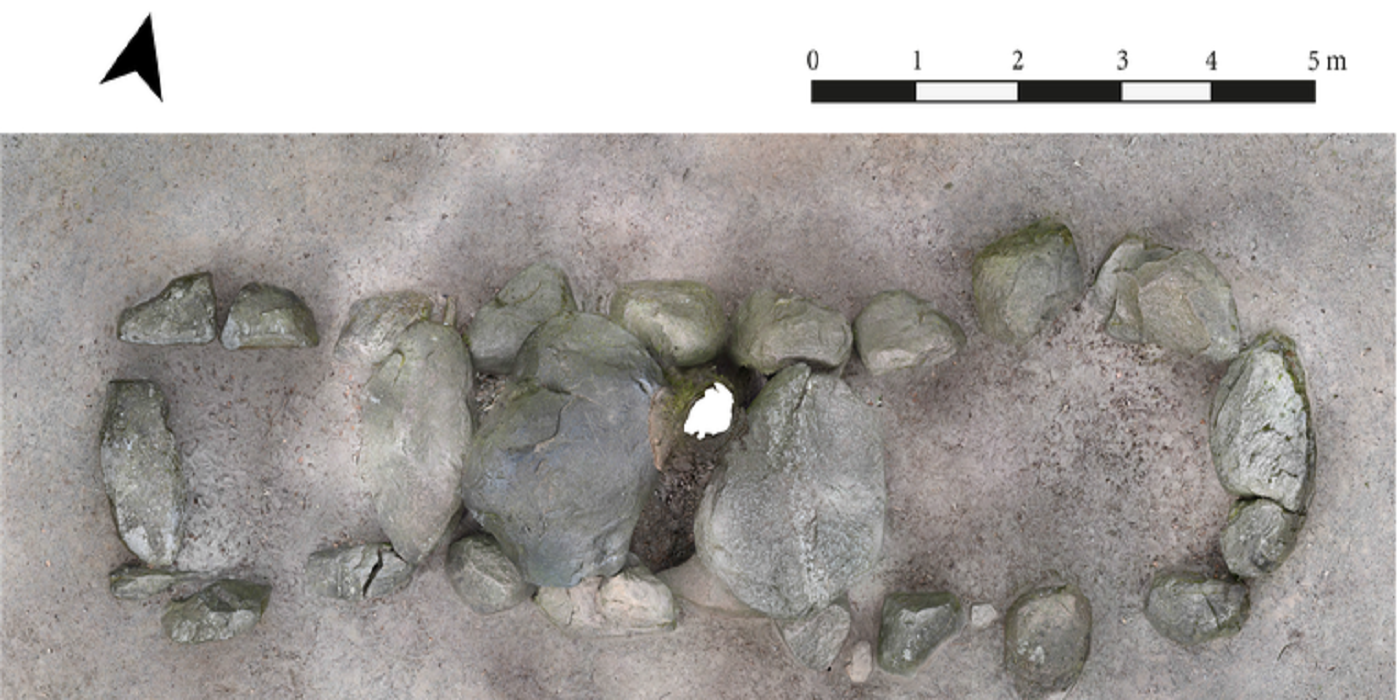
Reconstruction Düwelsteene 3000 BC
Potential reconstruction of the tomb and what it could have looked like around 3000 BC

Potential reconstruction of the tomb and what it could have looked like around 3000 BC

Floor plan of the reconstructed tomb
From the excavation carried out in 1932 under archaeological supervision, it can be proven that the chamber floor was covered with flat fieldstones and flints. Today, almost all supporting stones and three capstones remain. There is no longer any evidence of the enclosure made of smaller stones. The entrance to the tomb can also no longer be definitively determined.
The Düwelsteene belong to the passage grave type. This means, it is a tomb that is about 20 to 30 meters long, which consisted of a long rectangular chamber, that had an access on the long side of the tomb. Such passage tombs were often surrounded by an oval of smaller stones and covered with a mound of earth up to the stone boundary. In this grave and on the stone pavement the dead were placed and they were given funerary goods, as evidenced by the finds of ceramics, animal bone artifacts and jewelry during the excavation at the Düwelsteenen.

The reconstructed tomb
The reconstruction was carried out from the current model of the tomb and the
reconstruction of the megalithic tomb before 1932 by classifying the stones and
researching other similar megalithic tombs in the surrounding area. The stones
that still exist today were classified according to their position before 1932,
their dimensions and their volume and divided into one of four categories:
Capstone, supporting stone, enclosing stone or wedge stone.
Comparable megalithic tombs used for the reconstruction were found in Westphalia,
Lower
Saxony and the Netherlands.

The orthophoto (LWL-Altertumskommission für Westfalen/Klinke u. Richters)

The reconstructed tomb in Blender
The stones that still exist today were classified so that it could be arranged where the stones could have been located during the Funnel Beaker culture. The repositioning of the stones, which were taken from the reconstruction model from before 1932, was carried out in the 3D program Blender. In addition, the stones that no longer exist were modelled in the 3D programme. These reconstructed stones are deliberately modelled in such a way that they can be recognizably distinguished from the still existing megalithic stones.
















| Plane | Position | Flip |
| Show planes | Show edges |

On this website, archaeology enthusiasts and researchers can virtually view the Düwelsteene as a 3D model in the state in which the megalithic tomb is found today. The stones of the tomb are also visible as a 3D reconstruction, presumably as they were positioned before the 1932 restoration. Another virtual reconstruction shows the megalithic tomb of the Funnel Beaker Culture as it might have looked around 3000 B.C.
Directions to the megalithic tomb, information about the restoration of the tomb in 1932 and the current 3D digitizations by the Altertumskommission für Westfalen (LWL), information about the excavation history, as well as tales about the origin of the megalithic tomb and the origin of the name Düwelsteene.
AboutThis website visualizes the history of the Düwelsteene and is designed for the digital reconstructions of this megalithic tomb. Would you like to tell me your opinion about the website? Your feedback helps me to improve the website in form and content! To support you, I have provided a feedback form, which you are welcome to use. Thank you very much!
Feedback